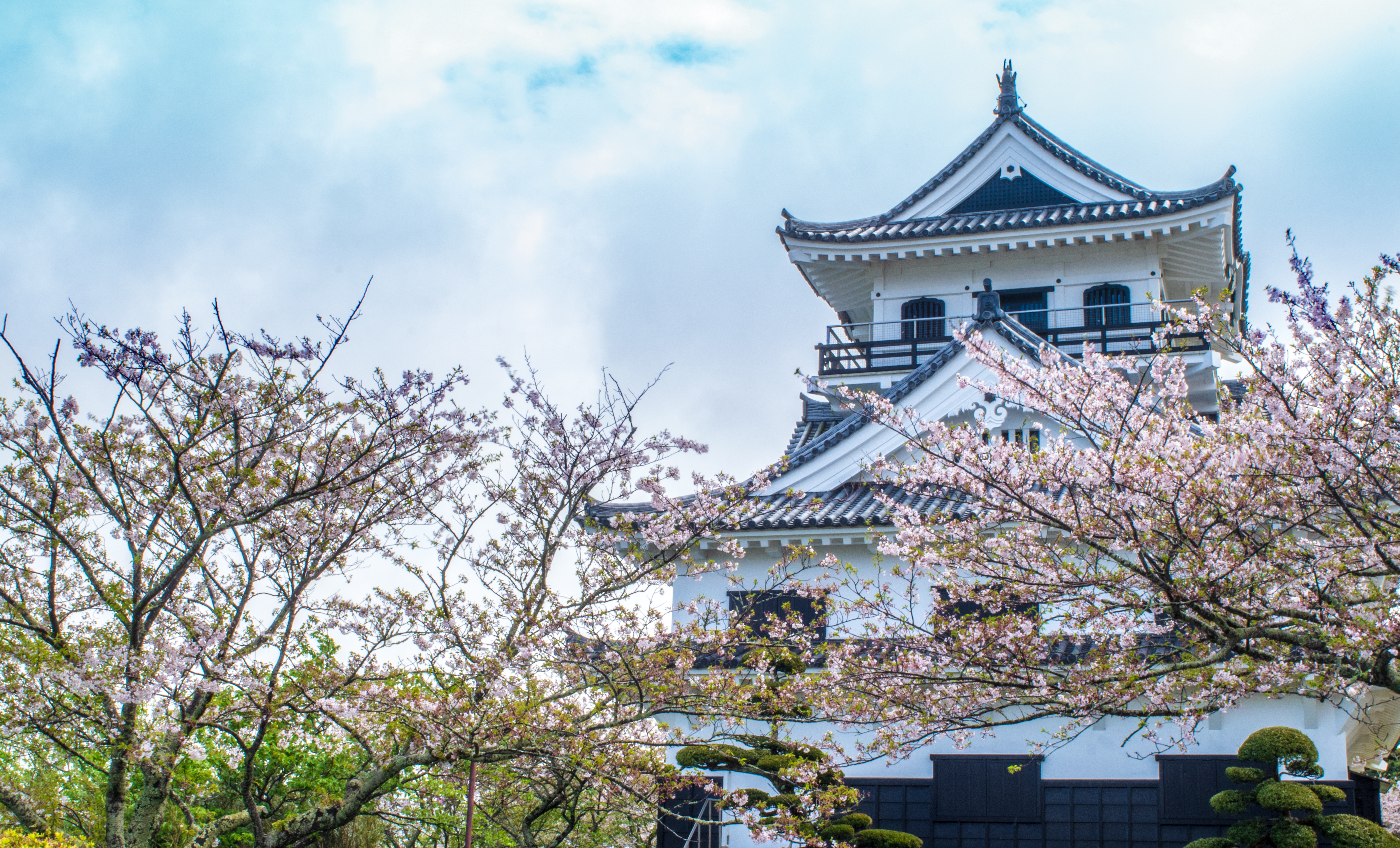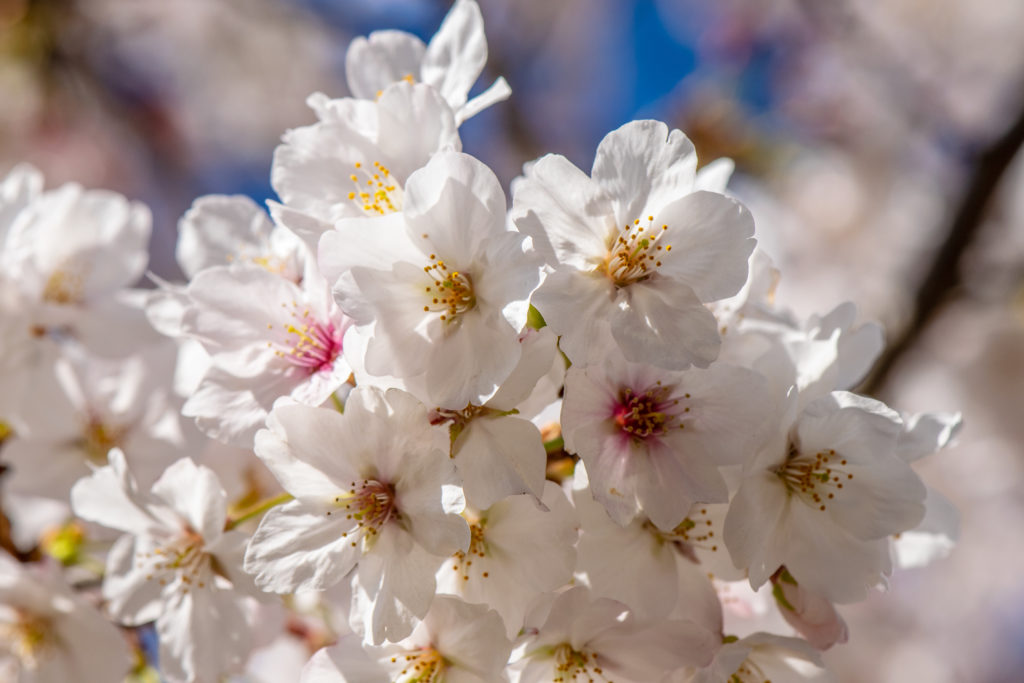
Cherry blossom in Japanese is Sakura and it’s the country’s national flower. It heralds the arrival of Spring and has come to symbolize ‘renewal’ and ‘hope’. It is with great anticipation that forecasters keep the public informed, from late March to mid-April, as to the best times to view these blossoms. The cherry blossom season usually lasts about one month and each individual tree may only flower for a week.
There are over 600 varieties of cherry trees in Japan, but 80% of the trees are of one variety and look identical because they were cloned for the masses, assuring that most of the trees today bloom at the same time. Most cherry trees produce flowers with five petals, but different varieties have flowers with 20 to 100 petals. Most of the cloned trees live for 40 to 50 years, but other varieties are 1,000 to 2,000 years old! Most trees produce light pink to white blossoms, but some are also dark pink, yellow or green. None of these trees bear fruit.
The Japanese love cherry blossoms so much that they’ve turned them into an ice cream flavor. The flower petals are edible and can be salted and added to treats such as cookies, cakes and jellies. Some are even pickled and used as a garnish or brewed into a traditional Sakura tea.
McDonalds is one of many restaurants and shops to decorate outlets with artificial cherry blossoms in Spring. They are known to serve cherry blossom burgers, complete with pink bread and Sakura Cherry drinks!

Source: The Internet
Cherry blossoms have come to symbolize ‘renewal’ and ‘hope’. The day we celebrate the resurrection of Jesus Christ is right during this Cherry Blossom season. This makes celebrating these things even more meaningful! It is because of the incredible work of Christ that we can joyously experience a renewed life and an eternal hope.
Most Japanese know very little about the Gospel and and only celebrate the same things Americans celebrate of life through colored eggs and baby animals, but each year our Creator God reveals Himself afresh to us all through His wondrous and spectacular creation. For a short season, everybody is fascinated by the stunningly beautiful and ornate blossoms that adorn the trees.
For the invisible things of him from the creation of the world are clearly seen, being understood by the things that are made, even his eternal power. (Rom. 1:20).
Pray that many Japanese would come to realize that it is only through the unfathomable and gracious work of Jesus — dying on the cross and rising on the third day — that we can celebrate a truly renewed life and be filled with hope eternal.
Let us praise the Lord as we reflect on His awe-inspiring sacrifice as we view this splendid creation in any season of the year! Have you accepted His gift of salvation and can truly rejoice in the Creator, not just creation?





